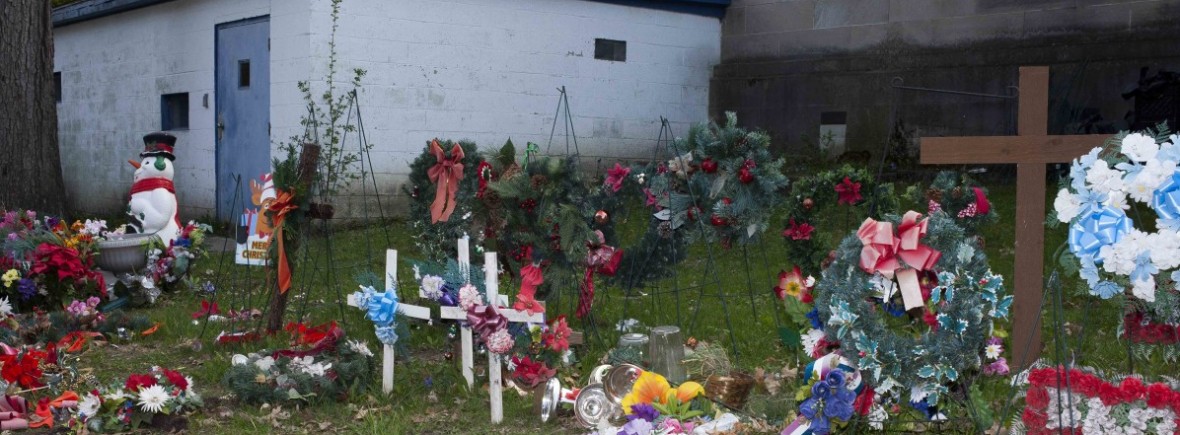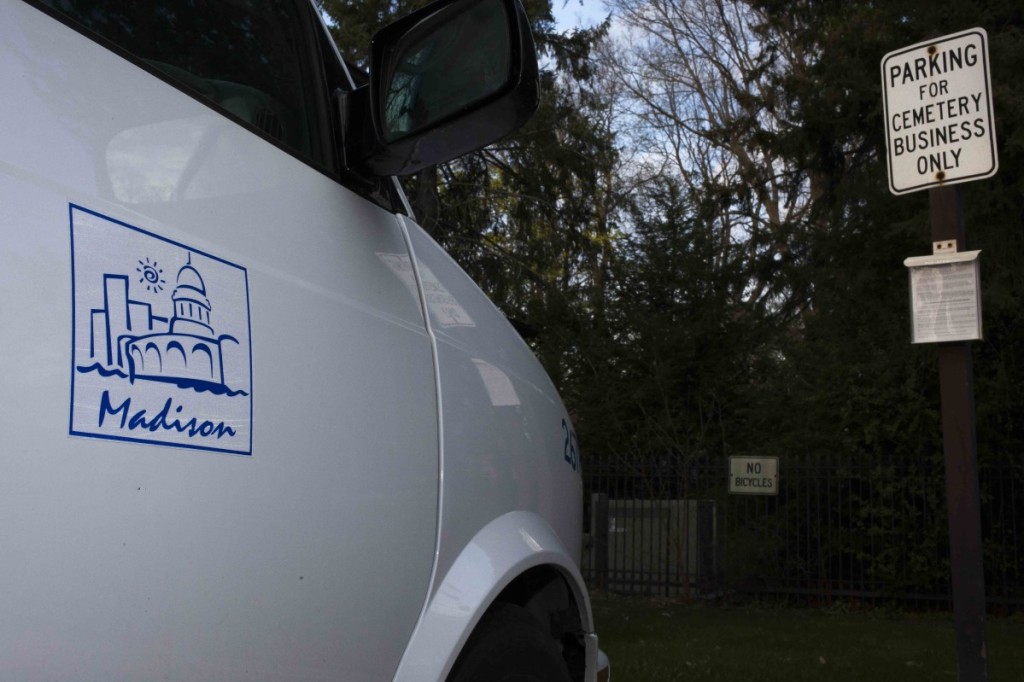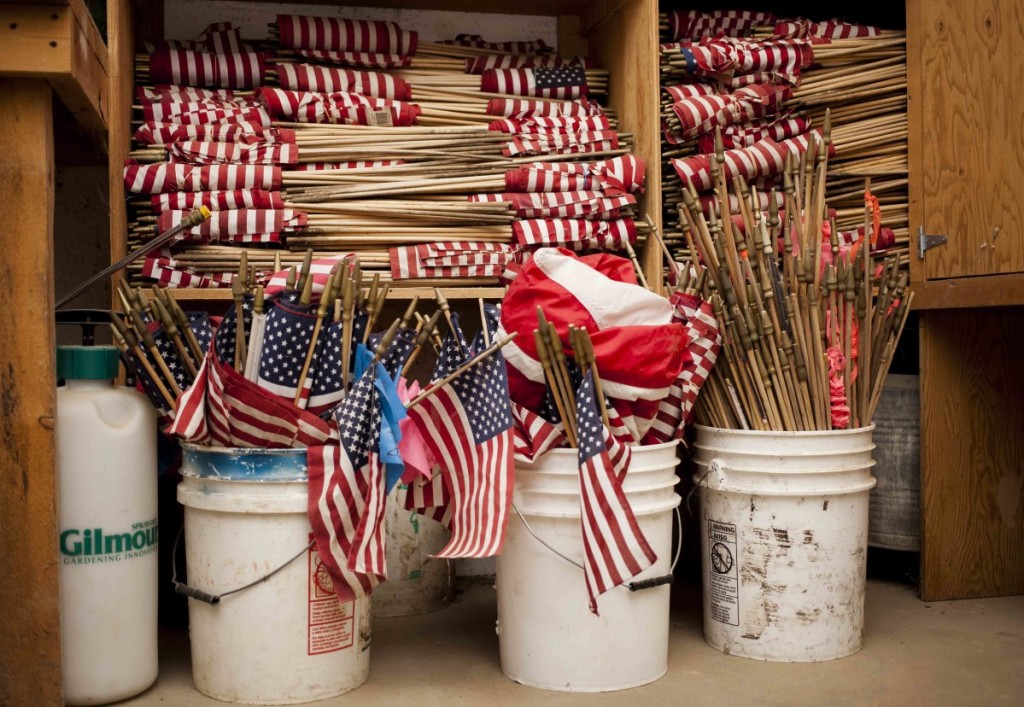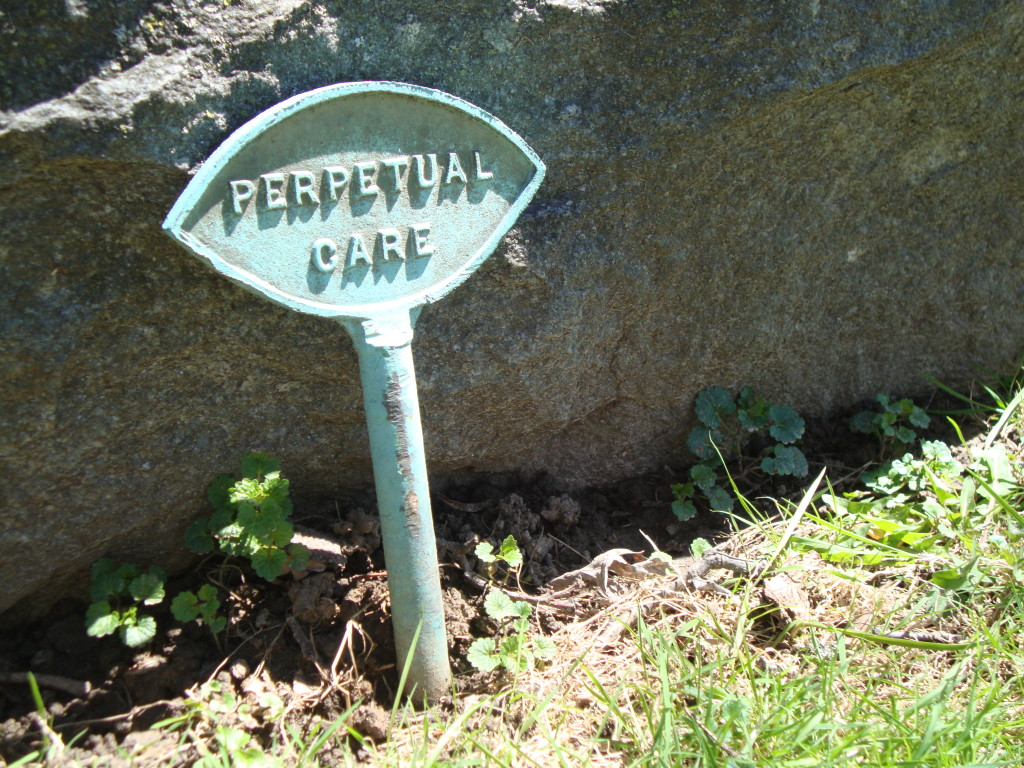From the arrival of the body at the cemetery until the closing of the grave, state law requires that a licensed funeral director be in attendance. Most often, the director will also deliver the cemetery fees payment once all work has been completed. Besides the labor necessary to open the graves, Forest Hill sells spaces in the cemetery and in their mausoleum and charges for various other services.
As for space, families can purchase a burial lot, a full-size mausoleum crypt, or a mausoleum niche suitable for cremated remains. Prices in 2015 range from $500 for an infant lot to $13,440 for an eight-person family lot. However, those fees only apply to residents of the City of Madison. Non-residents pay an additional $250 to $4,160 depending on the size of the lot. Crypts range from $3,655 to $5,400, while niches cost between $760 and $4,950. The different prices depend on the location within the mausoleum.
Services for interment or entombment are available at a flat rate that varies depending on the size of the grave, crypt, or niche. Entombment runs from $200 to $875 and interment from $360 to $925. In both cases, the smaller space needed to bury or entomb cremated remains incurs a correspondingly smaller fee. As mentioned above, after-hours services cost an additional $500 to $1000 due to staff overtime. The cemetery charges no fee for infants younger than one year old. Also, the city waives space and service fees for any Madison resident who served in the military.
Forest Hill’s additional services include memorial lettering on a crypt or on a niche and installing government-issued granite, marble or bronze headstones for the graves of veterans. Their employees can even be hired as pallbearers. On rare occasions, the staff has also been asked to disinter or disentomb bodies. While fans of crime procedurals may imagine disinterments for some sort of forensic investigation, these procedures most often take place when a family wishes to move their loved ones to be closer to other family members.
To calculate all of their prices, the cemetery staff does a market comparison and sets new rates each year. Prices increased by 10% for 2015. Throughout 2014, Forest Hill brought in around $230,000 in revenue from lot sales, entombments, and services. About three-fourths of that amount came from interment services and most of the other quarter from lot sales. Entombments and crypt sales earned just $8,000. During that same year, the cemetery conducted 185 interments and 27 entombments, while selling 74 burial lots and 6 mausoleum spaces. Although lower than several recent years, these numbers are still within the typical range of the past decade. Although Laura Bauer takes in the revenue, and Karen Thompson tracks the numbers in annual reports, the Parks Division handles all of the budgeting for Forest Hill.
Once a cemetery, always a cemetery
Unlike many other businesses, a cemetery has the long term responsibility of remaining a place of rest and memorialization in perpetuity. Cemetery managers attempt to achieve this goal through what is known as an endowment care fund, also known by the older term “perpetual care.” This trust fund is designed to allow a cemetery to be managed and cared for forever, long after it is sold out. But the existence of an endowment care fund does not, in itself, guarantee this promise. Economic conditions, competition, management decisions, and the evolution of its surrounding community all affect the life cycle of a cemetery.
Forest Hill is currently at the point in its life cycle in which the cemetery has fewer plots for sale. Soon, all of the plots will be sold, but this does not mark the end of its economic life. The cemetery will continue to hold services and memorials, and there are still several decades before many of the plots that have been sold will become the resting grounds for its purchasers. Once Forest Hill’s plots have all been sold out, much of the cemetery’s activity will focus on its maintenance. Interment spaces are never re-used and, in principle, the cemetery will never be torn up and resold for a different purpose. Its future as a well-maintained cemetery, however, is tied to the money placed in its endowment care fund during its active life. Forty percent of the proceeds from every plot sale at Forest Hill is sent to Madison’s city treasurer to be placed in the cemetery’s perpetual care fund.

Early in the cemetery’s history, commissioners established a perpetual care fund for Forest Hill in order to prevent this “beautiful city of the dead” from future abandonment. Source: Cemetery Commission. (193-?). Forest Hill Cemetery. Government pamphlet. Available at the Wisconsin State Historical Society Library.
The size of a cemetery’s endowment care fund depends on the revenues from plot sales and on how much growth results from the fund’s investment in stocks and bonds and, in some states, real estate. In theory, though a cemetery may fall on hard economic times, the endowment care fund should ensure the continued care of the cemetery and the bodies resting there. However, unsuccessful operators who mismanage their endowment care funds could cause their cemeteries to fail financially, becoming eyesores or financial burdens to their communities. Actually, the size and use of endowment funds varies significantly across the country, largely due to the fact that cemeteries tend to be regulated at the state level and are, therefore, subject to different requirements and limitations. Moreover, factors outside of the cemetery operator’s control, such as natural disasters and rapid rises in maintenance costs, can threaten a cemetery’s long-term viability even with successful management of its perpetual care fund.
A cemetery’s governing board typically writes and approves a formal investment policy for the fund, setting the criteria for acceptable investments and outlining which decisions can be delegated to the investment manager. Some jurisdictions allow profits to be taken out of the endowment care funds, while others only allow a portion of the gains to be taken out for the purposes of making any necessary improvements to the cemetery.
So how big is big enough? How do cemetery operators know whether their endowment care funds will be able to produce a sufficient amount of income to care for their cemeteries in perpetuity? The answer is never final. Successful operators recommend repeatedly testing a fund’s adequacy by assessing how much has been contributed to the stock thus far, estimating future sales, calculating current and projected maintenance costs, and reconsidering any assumptions previously made about future capital appreciation. Ideally, the testing should be done periodically, bringing up to date any assumptions made and affirming or changing objectives. How often this is done, however, varies significantly across cemeteries nationwide. With increasing industry consolidation, one of the questions that remains is whether those who acquire cemeteries will act to rectify prior inadequate fund management or look to profit by making only the legal minimum contribution to endowment funds with little regard for the future. Only time will tell.
Back to Top | A Body’s Journey Main Page | Part 1 | Part 2 | Alternative Journey
SOURCES
Cemetery Commission. (193-?). Forest Hill Cemetery. Government pamphlet. Available at Wisconsin State Historical Society Library.
Llewellyn, John F., 1998. A Cemetery Should be Forever. The challenge to managers and directors. Glendale, California: Tropico Press.
Featured Image at the top by Brad Baranowski. For more of his work go to http://www.bmbfotos.com.



